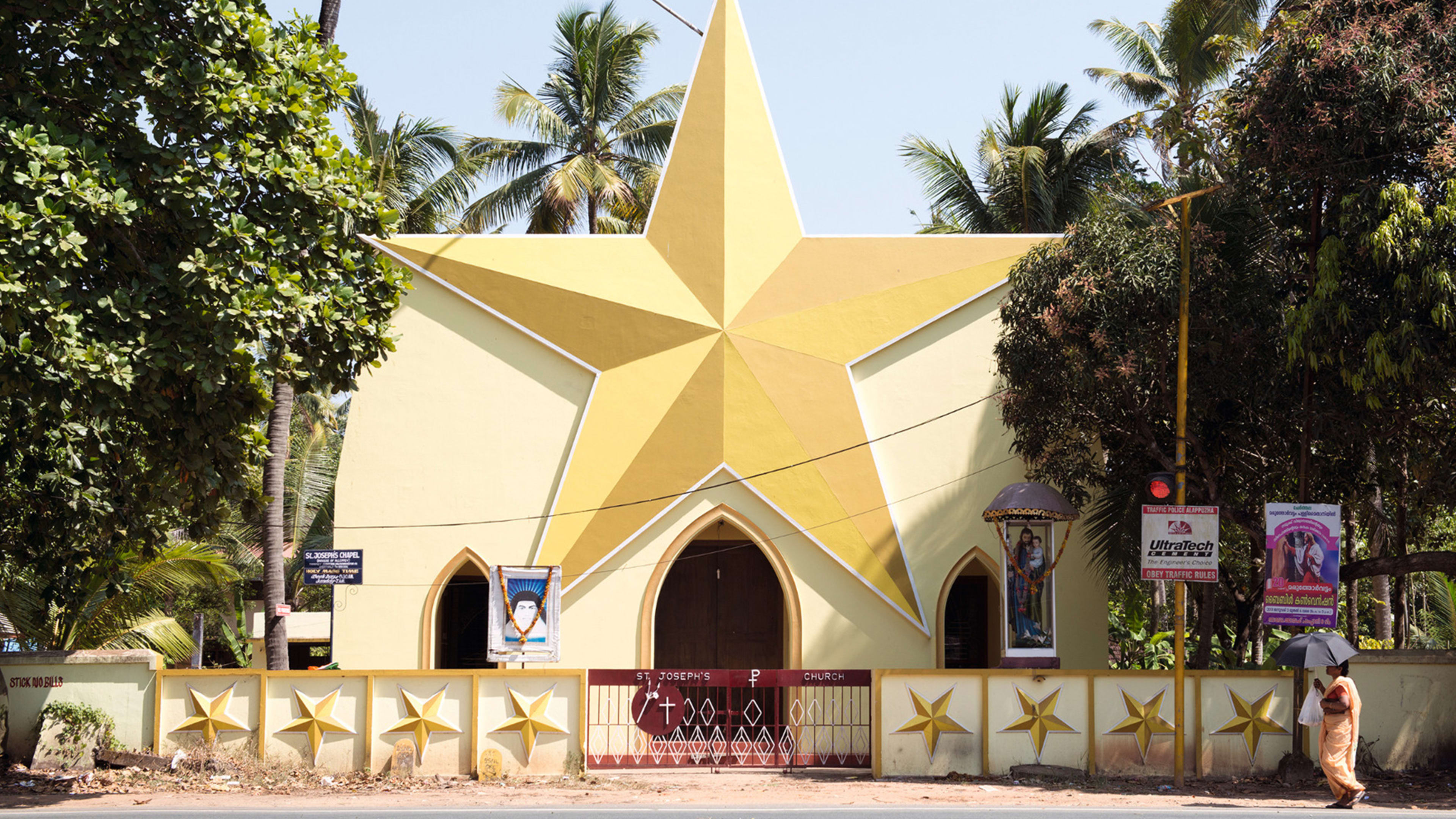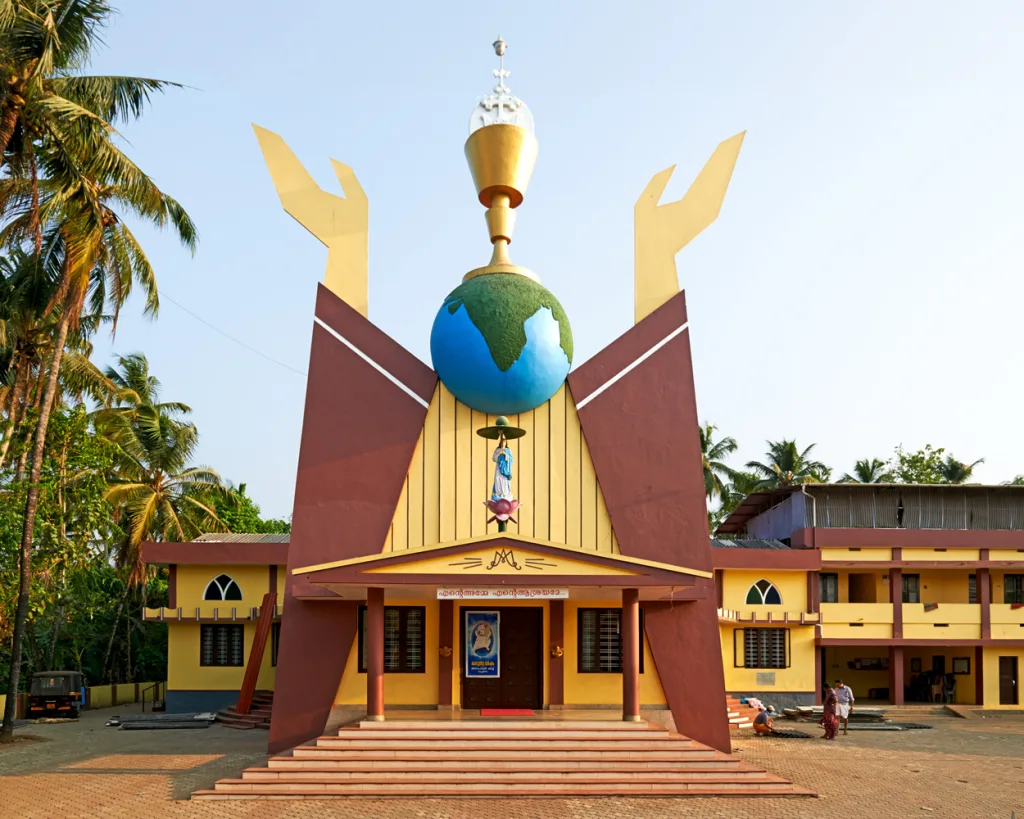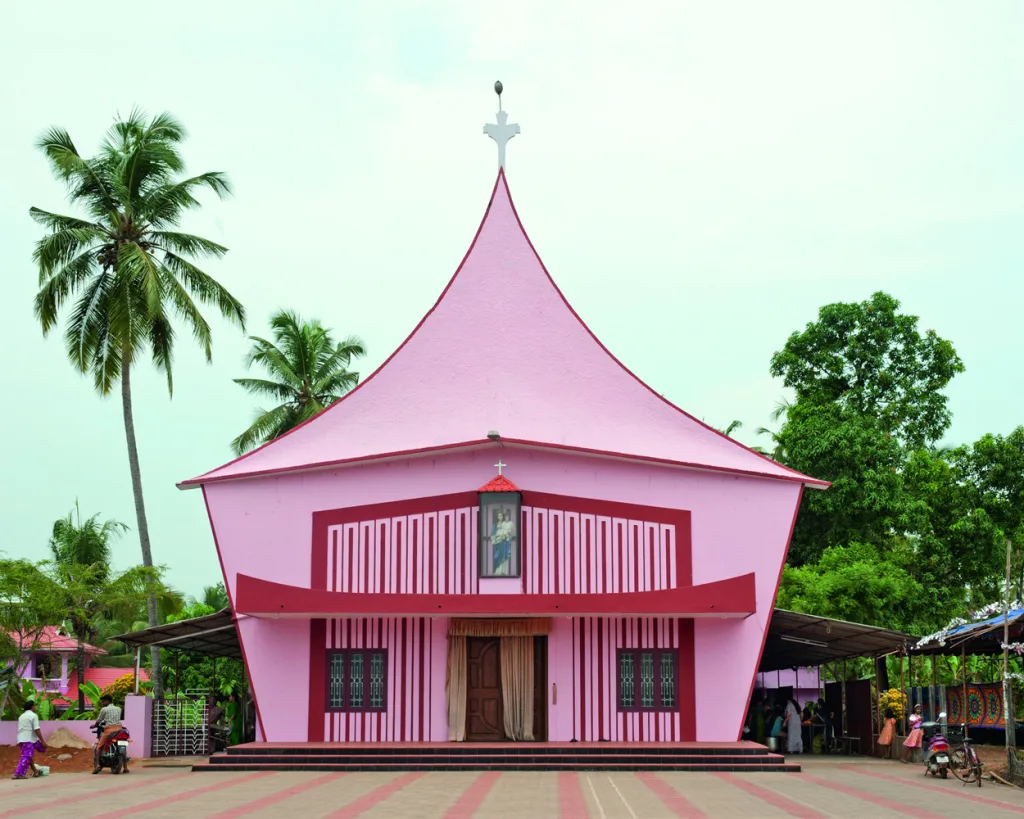Christian churches are usually instantly recognizable, thanks to their repetitive design: There’s usually a tower topped by a cross, with stained-glass windows and sometimes even Gothic statues. But in the southernmost Indian state of Kerala, churches look wildly different, with brightly colored modernist facades in the shape of globes, arms, and ships, as well as crosses.
A photo series by the German photographer Stefanie Zoche and her late artistic partner Sabine Haubitz documents a wide variety of these churches in Kerala, where about 18% of the population is Christian. In 2016, Zoche traveled around the state photographing the churches, after publishing a book on the similarly modern architecture of South India’s cinemas. Selections from the book and later images of churches are now on view at the Reiss-Engelhorn museum, in Mannheim, Germany.
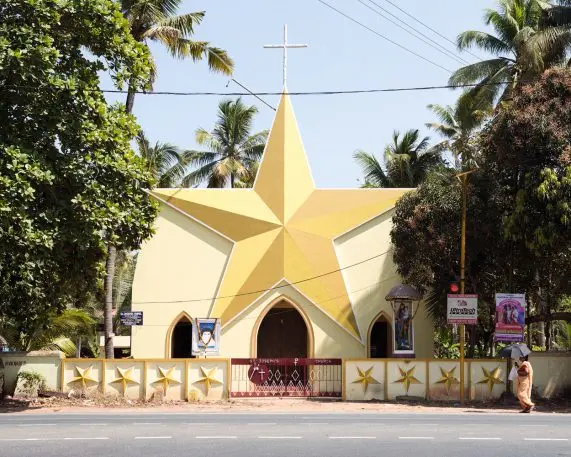
“For me, the facades of buildings are like faces of people: If you look at them carefully, you can find out a lot of what is lying behind, about the society, the intentions of those who made these buildings,” Zoche says via email. “On the facades of churches and cinemas in South India we can see complex cultural processes that took place after independence, when India was in a process of trying to define a new identity. Architecture played a vital role in this process.”
Up until 1949, Gothic-style churches were actually very popular in India’s south, as religious historian George Menachery told Quartz. But after India gained independence, new structures made use of materials such as concrete, as opposed to stone and wood, which enabled a radically different kind of decorative facade.
For Rohan Shivkumar, a Mumbai-based architect and urban designer, the imaginative elements used during this period are directly tied to India’s status as a newly independent, post-colonial nation. “Perhaps this is the condition that defines the anxiety of the post-colony; a desire to redefine its identity through a schizophrenic relationship with what it sees as its tradition, and what it sees as modernity,” Shivkumar writes in Zoche’s 2016 book Hybrid Modernism, which focused on movie theaters built in a similar style. “The belief is that in donning these signifiers lie some seeds for change.”
Zoche’s photos focus on the churches’ delightful facades, which are unlike anything seen in a western-style church. The aquamarine facade of St. Antony’s Church in Peratta is completely flat and asymmetrical, with white geometric lines and patterns carving up the surface. St. Theresa’s Ship Church, in Eravu, is, as the name suggests, in the shape of a boat, presumably Noah’s Ark. Our Lady of Miracles in Thoppumpady has a geometric star as its facade, with a shooting star coming off one of the points. These designs are a delightful reminder of the joy of faith–something that you rarely find in the often oppressive architecture of traditional churches in Europe.
And that was deliberate. “The church and the cinema owners no longer wanted to build their respective buildings in the colonial style, so they turned toward modernism,” Zoche says.
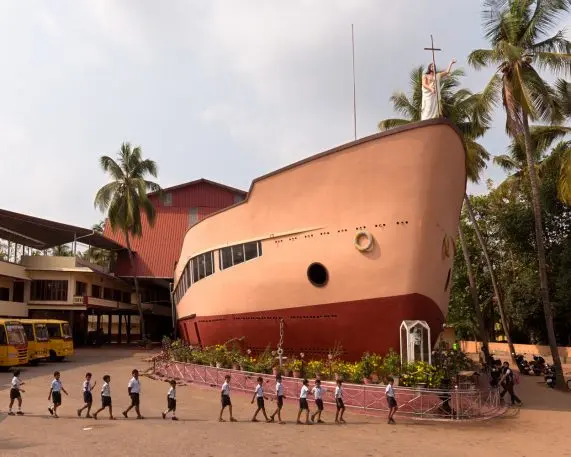
India’s relationship with modernism was been influenced by the famed architect Le Corbusier, whom India’s first prime minister, Jawaharlal Nehru, commissioned to design the city of Chandigarh, in the northern state of Punjab. But while South India’s churches have some elements of modernism, they’re too original to be defined by one style. “You can see some influences of modernism in the facades of the churches and cinemas, but they are punctuated by elements that from a western perspective would count as anti-modernistic,” Zoche says. She sees a mix of modernism, Art Deco, and even elements of socialist art, Islamic art, and local architectural elements.
These churches are a bright spot against the dark history of colonialism, at least according to Zoche: “The architectural style is a testimony of the desire of a nation that had been colonized for a long time by the British Empire to shake off the yoke and create a unique architectural language of their own.”
Check out these phenomenal churches in the slideshow above.
Recognize your brand’s excellence by applying to this year’s Brands That Matter Awards before the early-rate deadline, May 3.
